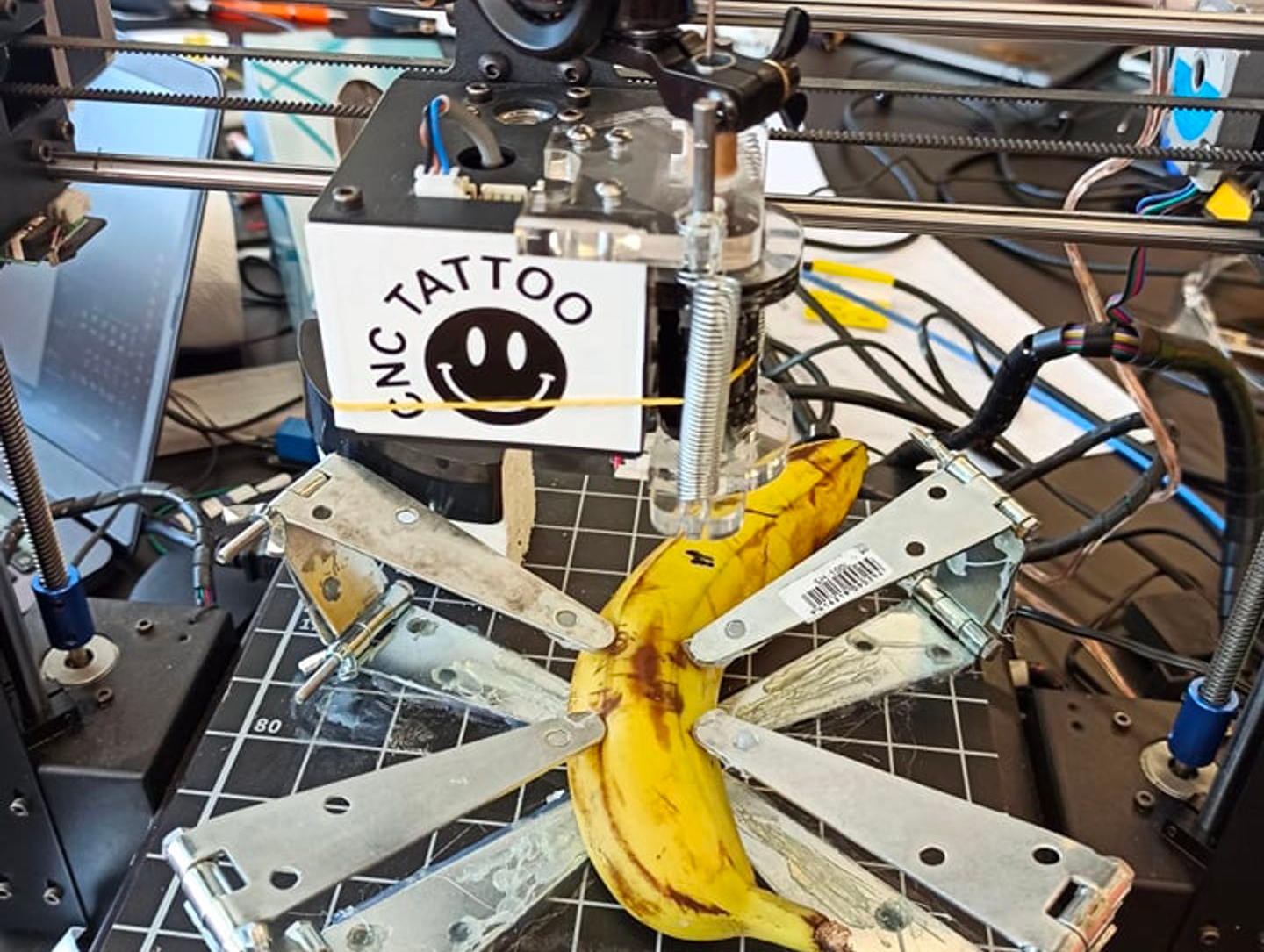
CNC Tattoo: The First Terrible Ideas Hackathon
The inaugural Terrible Ideas Hackathon was all about pushing boundaries—and believe me, when the idea of a CNC tattoo machine came up, we realized just how far those boundaries could stretch. In every sense, it was the quintessential project for such an event: ambitious, slightly reckless, and undeniably intriguing.
The Spark of Inspiration
Inexplicably, Hayden had recently acquired a tattoo machine. He wasn't a tattoo artist, nor was he intending on training. Nonetheless, the machine was there, and it sparked a wild idea: "What if we could use a CNC machine to tattoo?" The thought was both absurd and brilliant, and it quickly became the centerpiece of our hackathon project. Naturally, in true hackathon spirit, we decided to give it a shot.
Building the Beast
We dove headfirst into creating the machine. Once we secured a CNC platform (a Creality 3D printer), the real struggles began. I focused on implementing the G-code, whilst Hayden took on the task of designing and manufacturing the tattoo gun mount. Liam focused on a means of strapping the --victim-- canvas down. Very quickly, we realised we were going to run into an issue. 3D printers, and CNC platforms in general, are designed to move in planes. Arms on the other hand, are very much curved. We needed to find a way to get the tattoo machine to move in a way that would allow it to follow the curves of the skin.
Our initial solution was to probe the arm, building a 3D mesh that we could use to offset the G-Code. This was a great idea in theory, but in practice, it was a nightmare. The machine was not designed to probe the arm, and we quickly found ourselves in a world of pain. We spent hours trying to get the machine to work, but ultimately the complexity of the task proved too much.
At this time, it occured to us that given enough lubricant, we could simply springload the tattoo machine. Assuming the surface was sufficiently flat (within the bounds of travel), we could simply drag the gun across the skin.
Trial by Fire
After acquiring some food items to test, namely a banana and a piece of pork belly (which quickly began to smell), we set up the machine. The first test was a resounding success. The spring loaded mechanism functioned well, and we were able to convert SVG images into tattoos with some degree of accuracy. Unfortunately, the results weren't quite good enough to convince a live test subject to volunteer. Further tests proved unreliability, and we quickly realised that the machine was not going to be able to produce a tattoo that would be commensurate to the gravity of receiving one.
The Community Vibe
Despite — or perhaps because of — the ridiculousness of our project, the atmosphere at the hackathon was electric. Ideas flowed fast and freely, each as delightfully "terrible" as the next. Breaking the mold, experimenting, and embracing the absurd were the orders of the day.
Wrapping Up
The CNC tattoo machine may not have inked any masterpieces, but it accomplished something far greater: it embodied the heart of the Terrible Ideas Hackathon. In the end, it reminded us that creativity thrives when we permit ourselves to explore without restraint—even when the results are, quite literally, terrible.
Looking Forward
As I closed the chapter on this wild endeavor, one thing was certain: this event set the tone for many more moments of madness to come. I can't wait to see what next year brings. For now, the CNC tattoo machine stands as a testament to what happens when boundaries are not just crossed, but obliterated.